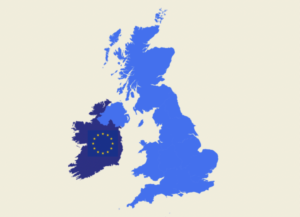Windsor Framework update: Key details ahead of 1st May 2025 implementation
Topics

The Windsor Framework’s latest updates come into effect on 1st May 2025, introducing new trading arrangements between Great Britain and Northern Ireland. Customs professionals will need to carefully understand and navigate these changes.
Here, we take a closer look at the updates and some of its implication’s customs professionals will need to consider.
What is the Windsor Framework?
The Windsor Framework establishes a new set of trading arrangements between Great Britain and Northern Ireland and applies to all goods sent by both parcel and freight. Agreed by former Prime Minister Rishi Sunak and European Commission President Ursula von der Leyen in February 2023, the framework modifies the Northern Ireland Protocol and is integral to the UK’s post-Brexit trade system.
The Northern Irish assembly recently voted to extend these arrangements for four years, aiming to avoid a ‘hard border’ on the Irish Sea and ensure smooth trade between NI and Ireland.
What is the UK Internal Market Scheme (UKIMS)?
 The UK Internal Market Scheme (UKIMS) has been set up as a result to allow businesses to declare their goods ‘not at risk’ when brought into Northern Ireland from Great Britain, for sale, or for final use by consumers in Northern Ireland. Companies are being encouraged to sign up to this scheme. The purpose is to simplify procedures and remove the need for a full declaration. More details can be found here.
The UK Internal Market Scheme (UKIMS) has been set up as a result to allow businesses to declare their goods ‘not at risk’ when brought into Northern Ireland from Great Britain, for sale, or for final use by consumers in Northern Ireland. Companies are being encouraged to sign up to this scheme. The purpose is to simplify procedures and remove the need for a full declaration. More details can be found here.
It pays for customs professionals to understand this change in trading regulation and ensure high standards in tariff code accuracy even with reduced data.
What is the UK Carrier Scheme?
 A new trusted carrier scheme has been set up to allow carriers to move parcels between Great Britain and Northern Ireland without submitting certain documents, subject to conditions.
A new trusted carrier scheme has been set up to allow carriers to move parcels between Great Britain and Northern Ireland without submitting certain documents, subject to conditions.
The latest government guidance says:
“Businesses or consumers in Great Britain sending a parcel by direct transport to an individual residing in Northern Ireland for personal use, or a consumer in Great Britain returning goods to a business in Northern Ireland will need to supply their parcel carrier with information”
Customs teams may need to support carriers in aligning tariff codes to this simplified format to ensure continued accuracy and correct duty payments.
How to prepare for The Windsor Framework updates
-Stay informed: Regularly review updates from HMRC and industry guidance related to the Windsor Framework. Here’s a useful source of information from HMRC
-Engage proactively: Ensure descriptions and classifications align accurately with new requirements and discuss changes with your team Take a look at HMRC’s checklist for sending parcels
With any change in regulation, it pays to get on top of the detail and prepare. In this current landscape of constantly evolving geopolitical policies, seeking out information and relying on a classification system that notifies you of tariff changes, keeps you one step ahead of compliance requirements.
Read more about adapting to an ever-changing regulatory landscape.
Other Useful Resources
From spreadsheet chaos to smart compliance
Data accuracy matters more than you think in customs classification. In global trade, the difference between complian...
Adapting to an ever-changing regulatory environment
In the fast-moving world of international trade, compliance is more than just a legal necessity; it’s a competitive ad...
Struggling with tariff codes? Visit us at IFE Manufacturing 2025
Navigating tariff classification can be a complex and time-consuming process, but it doesn’t have to be. That’s why ...



